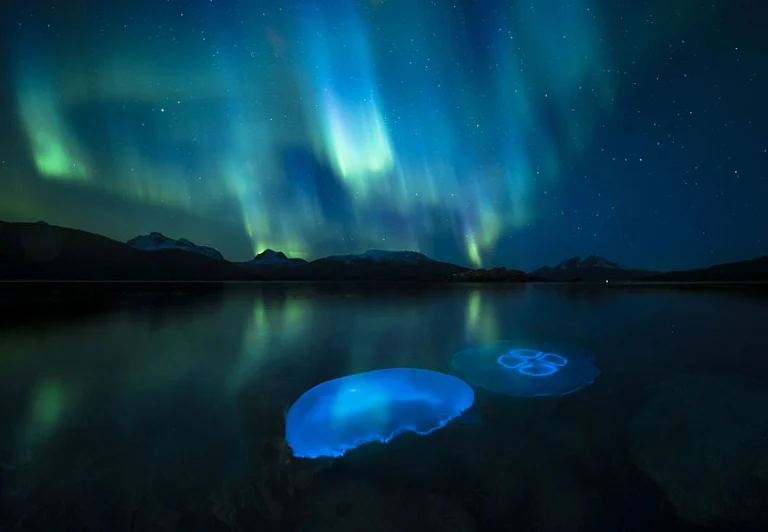Skygazers excited for their next chance to see the northern lights can count on a powerful ally: a dedicated team of space weather forecasters keeping a close watch on the sun for the next major solar explosion.
The recent display of the aurora borealis, visible as far south as Florida, was an extraordinary event. However, experts predict even more stunning displays in the coming years as the sun reaches the peak of its 11-year sunspot cycle.
In Boulder, Colorado, the federal Space Weather Prediction Center (part of the National Oceanic and Atmospheric Administration) is on high alert. Within this secure facility, giant screens show images of the sun through various filters, capturing everything from visible light to its intense magnetic fields and the solar flares constantly erupting from its surface.
"We're always trying to figure out what will impact our little blue marble," said senior forecaster Shawn Dahl.
Powerful sunspots, often accompanied by massive ejections of superheated plasma from the sun, can create breathtaking auroras. However, these solar activities also pose threats to satellites, airplanes, GPS systems, and the power grid.
While people near the poles (in places like Alaska, Iceland, and Finland) frequently see the aurora during winter, last month’s display was unique for its visibility in regions that typically don’t experience them, especially during late spring. Experts suggest that the typical viewing patterns will continue, but the presence of large sunspots increases the likelihood of widespread displays in the near future.
Typical aurora forecasts provide only a few hours of advance notice. However, large displays, like the one last month, are generated by solar explosions detectable by forecasters days before they impact Earth.
Forecasters are currently monitoring a sunspot group known as Region 3697, along with solar flares and coronal mass ejections—massive plasma eruptions with their own magnetic fields. These sunspots appear as gray disturbances on the sun's surface and are significantly larger than Earth.
Shawn Dahl explained that while their forecasts are crucial for electric utilities and satellite operators, they are now becoming more familiar to the general public. For instance, during the May 10 aurora display, Dahl’s nephew in North Dakota reported that the GPS on his tractor was off by 12 feet, a rare occurrence.
"This is the first time I’ve received a space weather report from a family member," Dahl said. "I usually get asked about snow or hail threats, but this time it was about a GPS system going in circles."
The powerful plasma impact during last month’s event temporarily altered Earth's magnetic field, causing some satellites to lose orientation. Government-funded satellites are designed to withstand such solar storms, but smaller, cheaper ones may not.
Peter Vedder from the Environmental Defense Fund mentioned that their $88 million methane tracking satellite, MethaneSAT, temporarily halted calibration work to weather the storm. Though the light from solar flares reaches Earth in about 8 minutes, ejected particles take two to four days to impact Earth’s magnetic field, usually resulting in pronounced auroras around the poles.
Elon Musk’s Starlink satellites, which provide global internet service, survived the May storm without issues. However, in 2022, 38 newly launched Starlink satellites burned up after a mild solar storm created unexpected conditions in Earth’s upper atmosphere. Starlink now collaborates closely with forecasters to monitor potential disruptions.
Solar storms can also affect long-distance power lines. The geomagnetic storms can create power surges that damage transformers and other equipment. In 1989, a solar storm caused 6 million Canadians and residents of northern New England to lose power for nine hours. With proper warning, utilities can take steps to mitigate damage.
The most powerful geomagnetic storm on record, the 1859 Carrington Event, was so intense it reportedly woke miners in Australia, burned out telegraph equipment, and lit up the sky brighter than a full moon.
Solar storms can also interfere with radio communications and radar. During such storms, commercial airliners often take longer routes closer to the equator to ensure reliable radio communication with air traffic control and to avoid increased radiation exposure.
Predicting space weather remains challenging. Forecasters can predict the probability of solar flares and radiation storms, but accurately forecasting their occurrence is difficult.





























